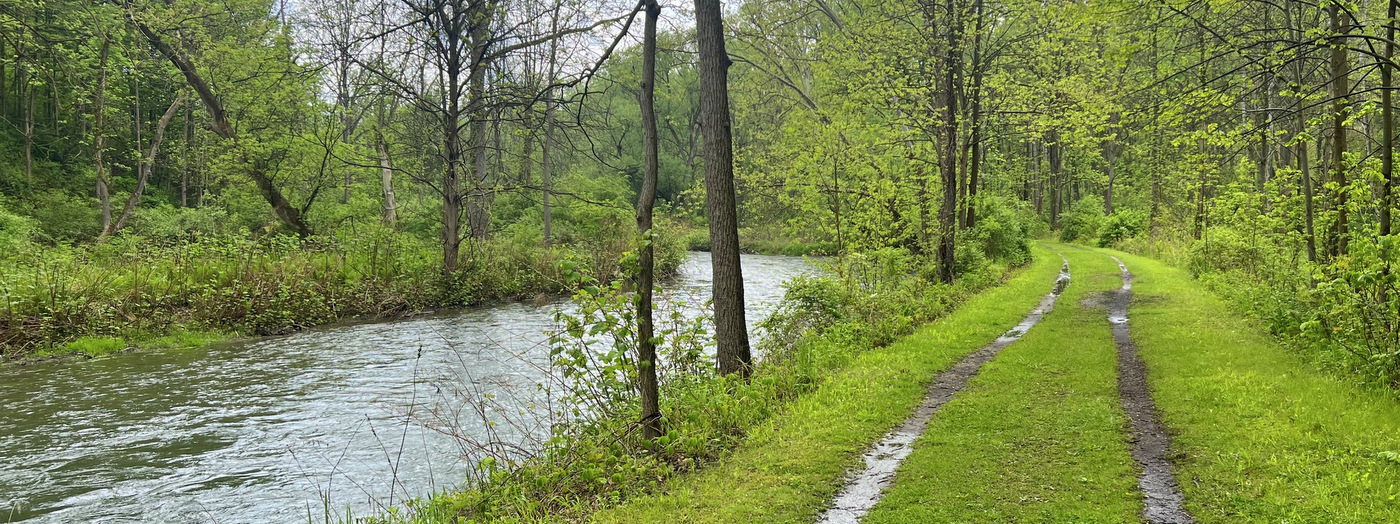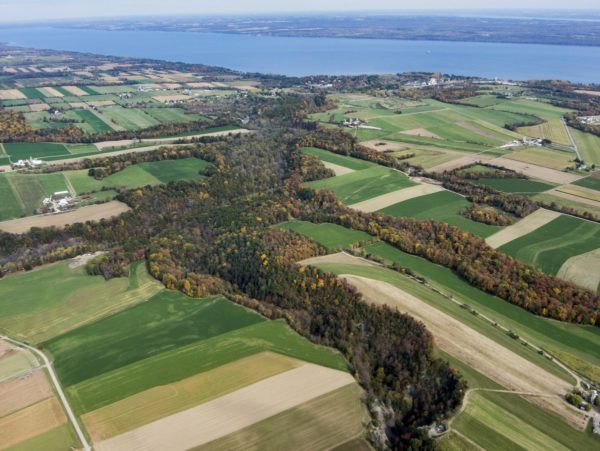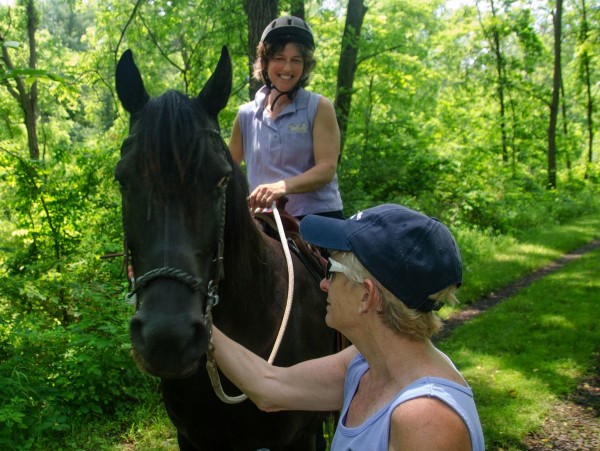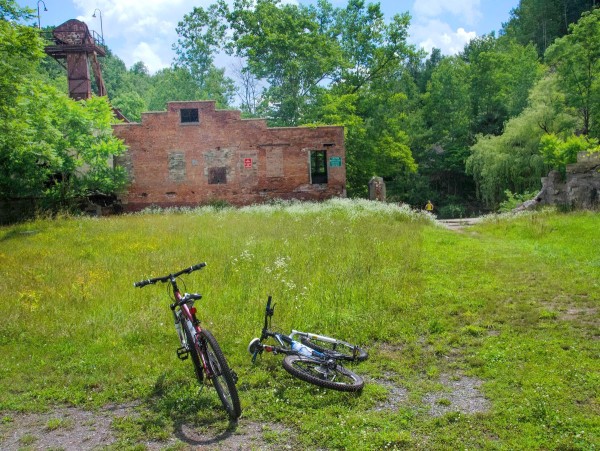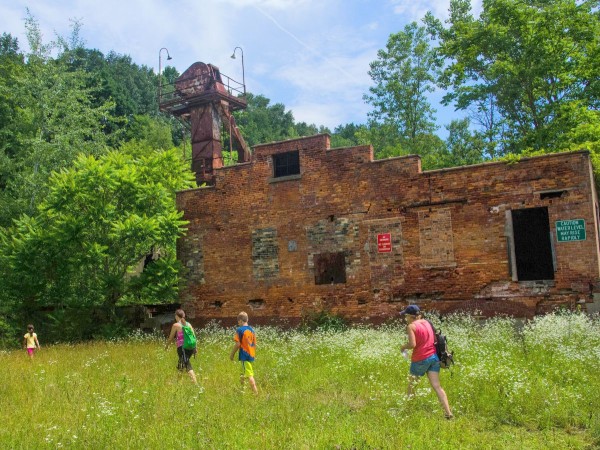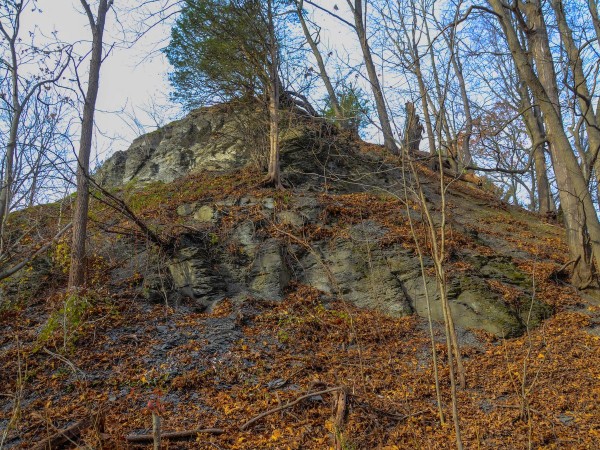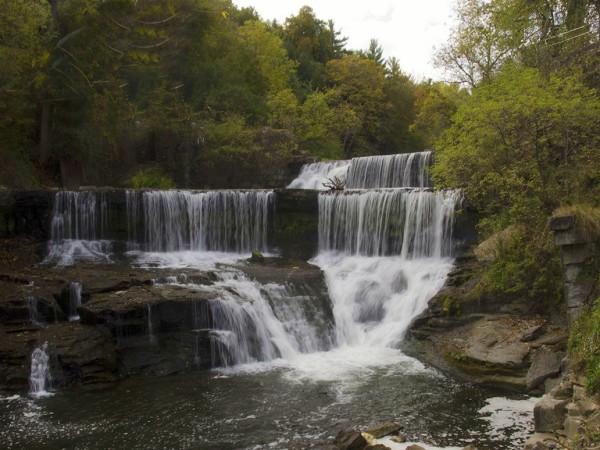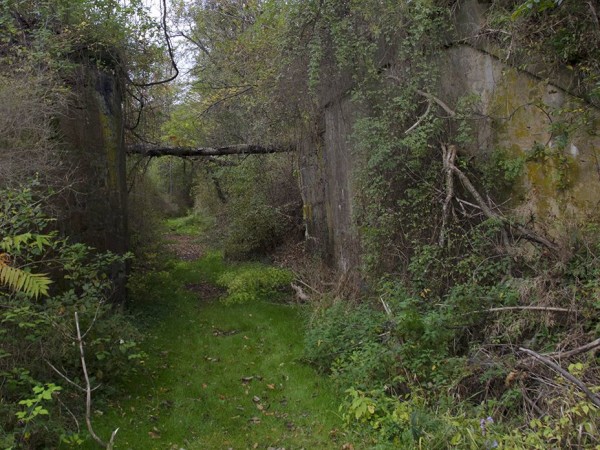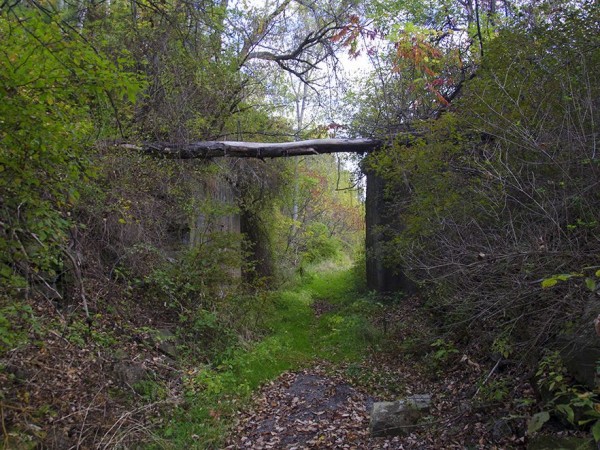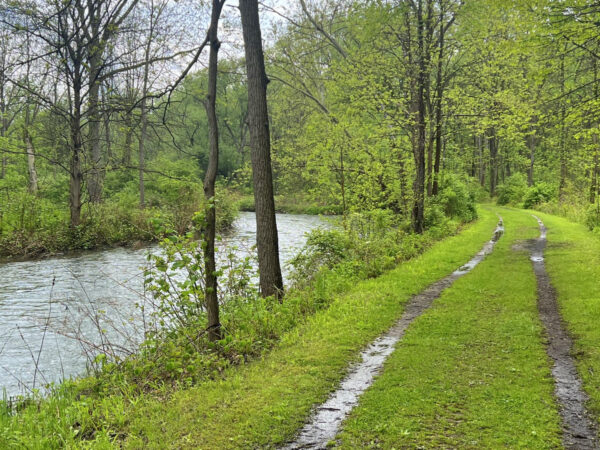Keuka Lake is the odd little duckling of the Finger Lakes; but, it is not the “ugly” duckling by any stretch! Instead, Keuka Lake is beautifully unique and, though it shares much with its fellow “fingers,” it is set apart by its peculiar shape. Early settlers called this the “crooked lake” because, unlike the long and sinuous, finger-shaped lakes, Keuka Lake is forked and shaped like a Y. The odd shape is one of its many unique features, but more pertinent to outdoor enthusiasts is that Keuka is the only Finger Lake that drains into another. This gave rise to the Outlet Trail.
During the mid-19th century, canal-building swept New York and the outlet connecting Keuka Lake to Seneca Lake held great commercial promise. A six-mile-long canal, known as the Crooked Lake Canal, connected the two lakes and fostered growth in existing mills and the creation of associated businesses. But like many other canals across the state, the canal was abandoned and a railroad took its place. Since it followed the winding towpath, the new rail line was sometimes referred to as the Corkscrew Railway. In 1972, Hurricane Agnes washed away the tracks, and its use as railroad ended. Late in the twentieth century, recreation advocates blazed the way in repurposing the towpath and rail-bed into the Keuka Lake Outlet Trail — one of the best multiuse trails in the region.
The canal and rail bed have long been abandoned but a winding stream remains and accompanies hikers, runners, bikers, and even equestrians along the 6.8-mile route. Along sections of the outlet, mostly at the eastern end, are the remains of old mill buildings and locks. In addition to the serene stream and lush woodlands, there are also two impressive waterfalls. The most notable is Seneca Mill Falls located at about the midpoint of the trail near the pavilion at the Lion Bruce Hansen Memorial Park. Many people stop here to view the falls and picnic.
Deteriorating masonry walls, dozens of feet tall, abut the stream both downstream and upstream of the falls, so caution should be used when trying to view the falls and outlet at this point. Indeed all the abandoned buildings found along the stream are deteriorating and should be viewed only from afar (see more about how to be safe when hitting the trails). Exploring the buildings is prohibited and unwise in their current condition, but they do add an interesting glimpse into the past and stark juxtaposition of the persistence of what nature and man have made.
Not surprisingly the Keuka Lake Outlet Trail, often referred to as simply the Outlet Trail, follows a generally downhill course from the outlet of Keuka Lake in Penn Yan to the inlet along Seneca Lake in Dresden. The trail varies from paved sections in Penn Yann to broad stone dust paths to mixed gravel to worn single track. Some sections are considerably rougher than others and mountain bikes are recommended for cyclists. But even along the sections with a single worn path, the trail-base is broad and two can travel abreast which also makes passing the many other travelers along the trail easy.
The trail is maintained and owned by the Friends of the Outlet, Inc., a nonprofit group, who publish detailed maps and a guidebook of the trail that highlights the points of interest and rich history that can be observed along the trail.
Equestrians often frequent the trail and since horses are not a common occurrence along many trails, it may be prudent to brush up on trail etiquette when encountering a horse. When the riders approach, whether you are on foot or bike, stop moving and step aside to give the horse and rider a chance to pass. Step off the path, on the downhill side if possible, giving the animal plenty of room. Speak to the horse and rider as they approach so that the horse recognizes you as human and nothing to be afraid of; a friendly “hello” will do. Do not make any abrupt movements when the horse passes. When approaching from behind, announce your presence from as far as possible so that you do not startle the horse. Only pass when the rider says that it is safe. Pets should always be kept on a leash and held as far away from the horse as possible.

